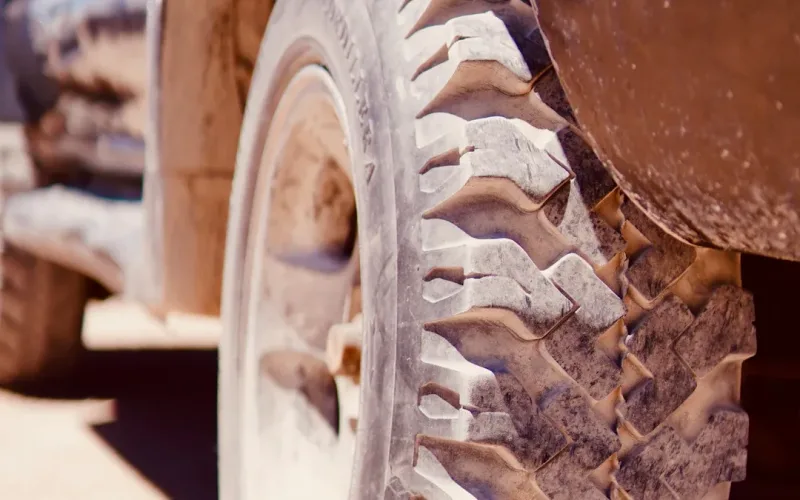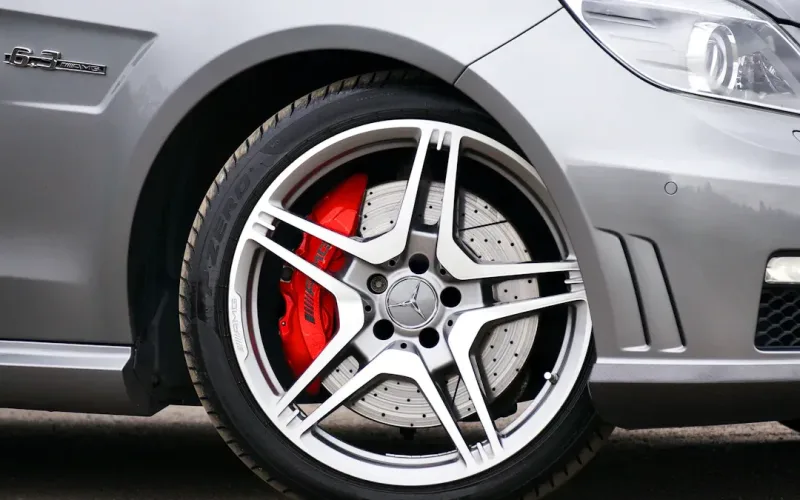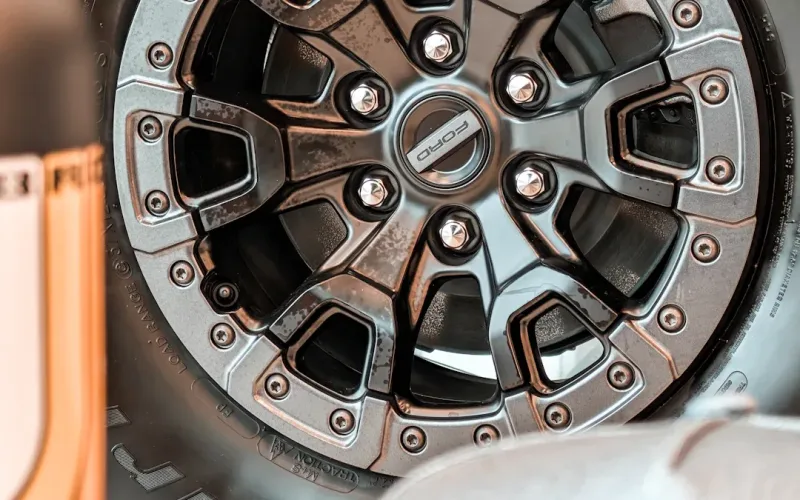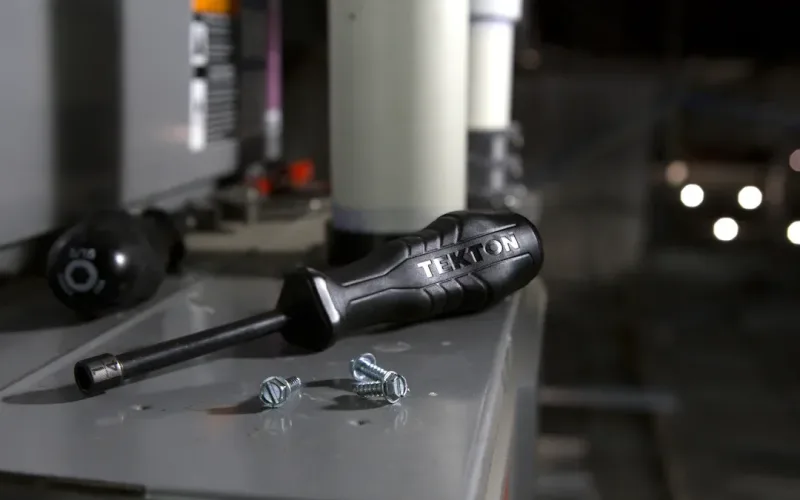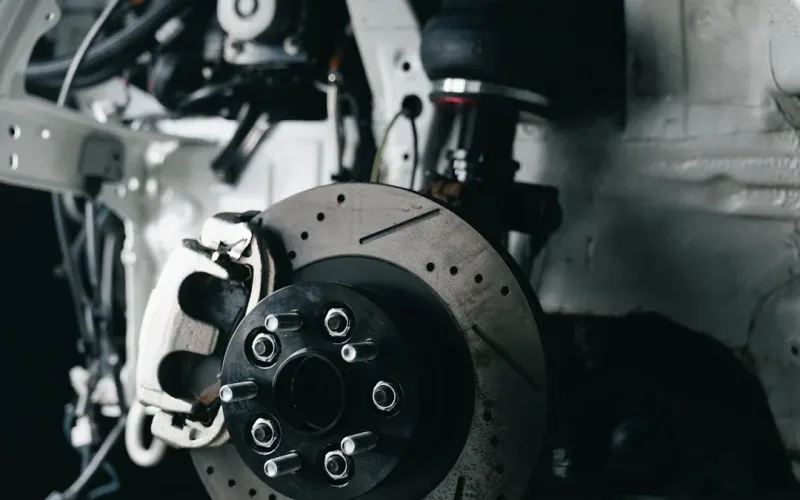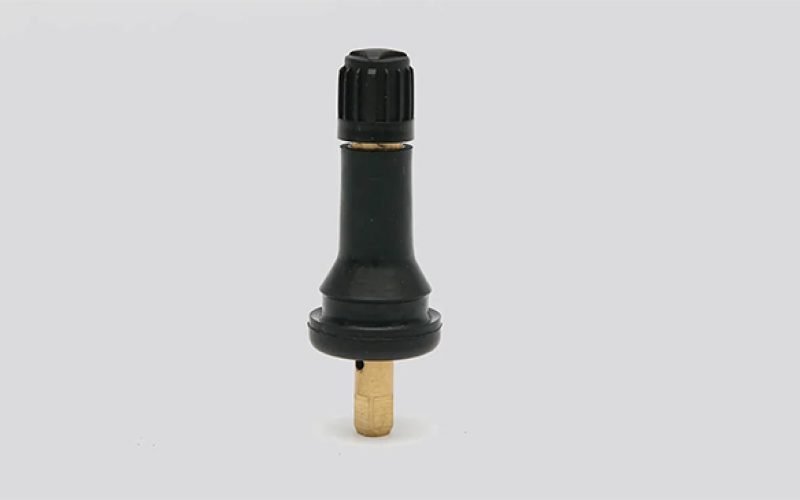

admin1
September 15, 2025
TPMS rebuild kit stats you should never ignore

You need to pay close attention to TPMS rebuild kit stats like compatibility, material quality, pressure rating, temperature tolerance, seal integrity, corrosion resistance, and OE versus aftermarket specifications. When you ignore these details, you risk sensor failure and unsafe driving. Maintaining proper tire pressure keeps your vehicle safe and efficient. Under-inflated tires can cause blowouts, while over-inflated tires reduce grip and affect braking. If you use the right tpms rebuild kit, you keep your tires at the correct pressure and avoid costly repairs.
TPMS Rebuild Kit: What It Is and What’s Inside

Definition of TPMS Rebuild Kit
You may wonder what a TPMS rebuild kit is and why it matters for your vehicle. According to automotive industry standards, a TPMS rebuild kit is a collection of parts you need to rebuild the valve of a TPMS sensor. You should use this kit whenever you service your tires or TPMS sensors. This helps keep the sensor working properly and ensures your tire pressure monitoring system stays accurate. When you use a TPMS rebuild kit, you protect your sensor from leaks and damage. You also help your tires last longer and keep your car safe on the road.
Tip: Always use a TPMS rebuild kit during tire changes or sensor maintenance. This simple step can prevent sensor failure and costly repairs.
Essential Components of a TPMS Rebuild Kit
A standard TPMS rebuild kit includes several important parts. Each part plays a role in keeping the sensor sealed and working well. You will find these common components in most kits:
- hex nut
- washer(s)
- nickel plated valve core
- rubber sealing grommet
- plastic sealed valve cap
- sometimes an entire metal valve stem or a rubber valve stem
The hex nut holds the sensor in place. Washers help seal the connection. The nickel plated valve core resists corrosion and keeps air inside the tire. The rubber sealing grommet stops leaks. The plastic sealed valve cap protects the valve from dirt and moisture. Some kits include a full valve stem for extra durability. When you choose a tpms rebuild kit with these parts, you make sure your sensor works as it should.
Note: Using all the components in your TPMS rebuild kit helps prevent air leaks and sensor damage. This keeps your tire pressure readings accurate and your driving safe.
Essential TPMS Rebuild Kit Stats You Should Never Ignore

Compatibility with Vehicle and Sensor
You must check that your TPMS rebuild kit matches your vehicle and sensor type. Every car model uses specific sensors, and not all kits fit every sensor. If you use the wrong kit, you risk leaks, sensor errors, or even damage to the sensor. Manufacturers design kits for certain makes and models. Always look for the part number or check your owner’s manual before you buy. Some kits work with both OE and aftermarket sensors, but you should confirm this before installation. When you choose a compatible kit, you keep your tire pressure monitoring system working as it should.
Tip: Match the TPMS rebuild kit to your vehicle’s year, make, and model. This step helps you avoid installation problems and sensor failures.
Material Quality and Durability
Material quality affects how long your TPMS rebuild kit lasts. High-grade materials resist wear, corrosion, and temperature changes. If you use a kit with poor materials, you may see leaks or sensor failure after a short time. Manufacturers often use OEM equivalent quality for nuts, valve cores, and caps. EPDM rubber grommets provide a strong seal and last longer than cheaper options. Aluminum valve stems offer strength and resist corrosion. The OEM recommends replacing valve stem components and EPDM rubber seals every time you change a tire. This practice keeps your TPMS system reliable.
Here is a table showing how different materials impact durability:
| Component | Material Grade | Durability Impact |
|---|---|---|
| Nut | OEM Equivalent Quality | Ensures proper fit and prevents premature failure. |
| Rubber Grommet | OEM Specifications | Provides a reliable seal, enhancing longevity compared to lower quality options. |
| Metal Valve Cap | OEM Equivalent Quality | Durable and resistant to corrosion, contributing to overall kit longevity. |
| Valve Core | OEM Equivalent Quality | Essential for maintaining tire pressure, ensuring performance over time. |
You should look for these features in your tpms rebuild kit:
- Sealing cap fits tightly for effective sealing.
- Hex nut secures the sensor in place.
- Rubber grommet made from EPDM rubber for durability.
- Aluminum valve stem is lightweight and strong.
- Valve core maintains tire pressure.
When you choose a kit with these materials, you protect your sensor and extend its life.
Pressure Rating Standards
Pressure rating standards tell you how much air pressure your TPMS rebuild kit can handle. If you use a kit with a low pressure rating, it may fail under normal driving conditions. Most kits meet or exceed the pressure requirements for passenger vehicles, but you should always check the specifications. The pressure rating must match your vehicle’s recommended tire pressure. This ensures the sensor reads accurately and prevents leaks. You can find the pressure rating on the kit packaging or in the product description. Always choose a kit that meets or exceeds your vehicle’s needs.
Note: Using a TPMS rebuild kit with the correct pressure rating keeps your tires safe and your sensor working properly.
Temperature Tolerance Range
You need to consider temperature tolerance when you choose a TPMS rebuild kit. Your tires and sensors face extreme heat and cold every day. In summer, road surfaces can get very hot. In winter, freezing temperatures can affect rubber and metal parts. If your kit cannot handle these changes, the sensor may fail or give wrong readings.
Most high-quality kits work well in a wide range of temperatures. Some kits can handle temperatures from -40°F up to 257°F. This wide range protects your sensor in almost any climate. The rubber grommet and seals must stay flexible in the cold and not melt or crack in the heat. Metal parts like the valve core and stem should not expand or contract too much. If they do, you might see leaks or sensor errors.
Tip: Always check the temperature range on the package or product description. Make sure it matches the weather in your area.
Seal Integrity and Leak Prevention
Seal integrity is one of the most important features in any TPMS rebuild kit. You want to keep air inside your tires and moisture out of your sensors. A good seal prevents leaks and keeps your tire pressure stable. If the seal fails, your sensor may stop working, and your tire could lose air quickly.
Look for kits that use EPDM rubber for grommets and seals. EPDM rubber stays strong and flexible for a long time. It resists cracking, shrinking, and hardening. The hex nut and washer must fit tightly to hold the seal in place. The valve core should screw in smoothly and not let air escape.
Here are signs of a strong seal in a tpms rebuild kit:
- The grommet fits snugly around the valve stem.
- The hex nut tightens without slipping.
- The washer sits flat and covers the opening.
- The valve core holds air under pressure.
If you see any cracks or damage on the seals, replace them right away. A good seal keeps your sensor safe and your tires at the right pressure.
Corrosion Resistance Features
Corrosion can damage your TPMS sensor and shorten its life. Water, salt, and chemicals from the road can get inside the sensor and cause rust or electrical problems. You need a TPMS rebuild kit with strong corrosion resistance to protect your investment.
Manufacturers use several methods to fight corrosion. Nickel-plated valve cores and aluminum stems resist rust and last longer than plain metal. Some kits use special coatings or finishes to keep moisture out. One of the best ways to protect the sensor is with epoxy potting compounds. These compounds form a tough, waterproof barrier around the sensor’s electronic parts. The barrier blocks water, dirt, and chemicals. This keeps the electrical connections safe and working for a long time.
When you choose a kit with these features, you help your sensor last longer. You also avoid costly repairs and keep your tire pressure system working well.
OE vs Aftermarket Specifications
When you choose a TPMS rebuild kit, you face a decision between OE (Original Equipment) and aftermarket specifications. OE kits come directly from the vehicle manufacturer. Aftermarket kits are made by third-party companies. Each option has unique features that affect your driving experience.
OE TPMS rebuild kits match your vehicle’s original design. You get parts that fit perfectly and work with your sensor system. These kits often last longer. Many OE sensors work for five to seven years before you need to replace them. You also receive a manufacturer warranty. If something goes wrong, you can contact customer service for help. OE kits give you peace of mind because you know the parts meet strict standards.
Aftermarket TPMS rebuild kits offer more choices and sometimes lower prices. However, you may face problems with fit and reliability. Many aftermarket sensors fail within weeks or months. You might see the TPMS warning light turn on again soon after you reset it. This can lead to frustration and extra costs. Most aftermarket kits do not include a warranty. Customer support is often limited. You may not get the help you need if you run into trouble.
Here are some key differences between OE and aftermarket TPMS rebuild kits:
- OE sensors last longer, usually five to seven years. Aftermarket sensors may fail much sooner.
- OE kits include a manufacturer warranty. Aftermarket kits rarely offer this protection.
- OE kits provide better customer service and support. Aftermarket options often lack specialized help.
- Aftermarket sensors can cause the TPMS warning light to turn on again, even after a reset.
You should think about your needs before you choose a kit. If you want reliability and support, OE kits are a strong choice. If you want more options and lower prices, aftermarket kits may appeal to you. Always check the specifications and reviews before you buy. A high-quality tpms rebuild kit helps you avoid sensor problems and keeps your tires safe.
Tip: If you want to avoid frequent repairs and get the best performance, choose OE specifications for your TPMS rebuild kit.
Why TPMS Rebuild Kit Stats Matter
Impact on Safety
You rely on your TPMS to keep your tires at the right pressure. When you use a rebuild kit with the correct stats, you improve your safety on the road. The National Highway Traffic Safety Administration (NHTSA) found that direct TPMS systems reduce severe underinflation by 55.6%. This means you are less likely to drive with dangerously low tire pressure. The FAST Act of 2015 made TPMS systems harder to override, so you get more reliable warnings. Studies like the TPMS-ORRC show that working sensors and proper maintenance help drivers avoid accidents caused by tire problems.
- Direct TPMS reduces severe underinflation by 55.6%
- TPMS systems now give more reliable alerts because of new laws
- Regular maintenance and rebuild kits help prevent sensor malfunctions
Tip: Always check your TPMS rebuild kit stats before installation. You protect yourself and your passengers from tire blowouts and loss of control.
Influence on Performance
Your vehicle performs better when you use high-quality TPMS rebuild kits. Good kits ensure OEM fit, form, and function. You get accurate tire pressure readings, which help your car handle well and stop quickly. Brass or nickel-plated valve cores resist corrosion and last longer. You avoid leaks and sensor errors. Easy pull-through applications make installation simple, so you spend less time in the garage.
- OEM fit keeps sensors working as designed
- Corrosion-resistant parts last longer and work better
- Reliable valve cores prevent air leaks
- Simple installation saves you time
Note: When your TPMS works well, you get better fuel economy and smoother rides.
Cost-Effectiveness and Longevity
You save money when you choose TPMS rebuild kits with strong stats. Durable materials like brass and nickel-plated cores resist wear and corrosion. Your sensors last longer, so you replace them less often. You avoid costly repairs and emergency tire changes. Kits with easy installation features reduce labor costs. You get more value from your investment.
- Long-lasting components mean fewer replacements
- Corrosion resistance protects your sensors and saves money
- Easy installation lowers service costs
Callout: Investing in quality TPMS rebuild kits helps you avoid unexpected expenses and keeps your vehicle running safely for years.
How to Choose the Right TPMS Rebuild Kit
Verifying Compatibility
You need to check that your TPMS rebuild kit matches your vehicle and sensor. Start by looking at your car’s year, make, and model. Manufacturers design sensors for specific vehicles. If you use the wrong kit, you may see leaks or sensor errors. Find the part number on your sensor or in your owner’s manual. Compare this number with the kit packaging or product description. Many kits list compatible vehicles on the box or website. You can also ask your mechanic or parts supplier for help. Matching the kit to your sensor keeps your tire pressure system working well.
Tip: Always double-check compatibility before you buy. This step helps you avoid installation problems and sensor failures.
Assessing Material and Build Quality
You want a TPMS rebuild kit with strong materials. Look for kits with EPDM rubber grommets. EPDM rubber resists heat, cold, and chemicals. Aluminum valve stems offer strength and resist corrosion. Nickel-plated valve cores last longer than plain brass. Check that the hex nut and washer fit tightly. High-quality materials help prevent leaks and sensor damage. You can find information about materials on the kit packaging or manufacturer’s website.
| Component | Preferred Material | Benefit |
|---|---|---|
| Grommet | EPDM Rubber | Flexible, long-lasting |
| Valve Stem | Aluminum | Strong, corrosion-proof |
| Valve Core | Nickel-Plated Brass | Durable, resists rust |
Note: Kits with premium materials protect your sensor and extend its life.
Checking Pressure and Temperature Ratings
You need to check the pressure and temperature ratings before you install a kit. Most passenger vehicles need kits rated for at least 60 PSI. Some trucks and SUVs require higher ratings. Look for the pressure rating on the kit label or in the product description. Temperature tolerance matters too. Good kits work from -40°F to 257°F. This range covers most climates. If you drive in extreme conditions, choose a kit with a wider range. Checking these stats helps you avoid sensor failure and keeps your tires safe.
Callout: Always match the pressure and temperature ratings to your vehicle’s needs. This step ensures accurate readings and reliable performance.
Inspecting Seal and Corrosion Resistance
You need to check the seals and corrosion resistance in every TPMS rebuild kit before you install it. Seals keep air inside your tires and block water from reaching the sensor. If a seal fails, your tire can lose air quickly. You might see the TPMS warning light on your dashboard. EPDM rubber grommets work well because they stay flexible in hot and cold weather. They also resist cracking and shrinking. You should look for grommets that fit tightly around the valve stem. A loose grommet can cause leaks.
Corrosion resistance matters just as much as seal integrity. Road salt, water, and chemicals can damage metal parts. Nickel-plated valve cores and aluminum stems help prevent rust. These materials last longer than plain steel. Some kits use special coatings to block moisture. You should inspect the valve core and stem for any signs of rust or discoloration. If you see damage, replace the part right away.
Here are steps you can follow to inspect seal and corrosion resistance:
- Check the rubber grommet for cracks or hard spots.
- Make sure the hex nut and washer fit tightly.
- Look at the valve core and stem for rust or pitting.
- Test the seal by pressing on the valve and listening for air leaks.
Tip: Always choose kits with EPDM rubber and nickel-plated or aluminum parts. These materials protect your sensor and help your TPMS system last longer.
Comparing OE and Aftermarket Options
You face a choice between OE (Original Equipment) and aftermarket TPMS rebuild kits. OE kits come from the vehicle manufacturer. They match your car’s design and offer high quality. Aftermarket kits come from other companies. They often cost less and may fit many models.
When you compare these options, you should think about compatibility, cost, features, and quality. OE kits fit your vehicle perfectly. You get standard features and longer battery life. Aftermarket kits may offer extra features like smartphone connectivity. Some aftermarket kits are easier to install. Quality can vary, so you need to check the manufacturer’s reputation.
Here is a table to help you compare OE and aftermarket TPMS kits:
| Factor | OE TPMS | Aftermarket TPMS |
|---|---|---|
| Compatibility | Designed for specific vehicles | May fit multiple models |
| Cost | Generally higher | More affordable |
| Features | Standard features | Extra features (smartphone connectivity) |
| Quality Indicators | OEM quality assurance | Varies by manufacturer |
| Installation Ease | Usually straightforward | May vary, some easier than OE |
| Battery Life | Usually longer | Varies, often shorter |
You should consider these points when choosing a kit:
- Aftermarket kits usually cost less than OE kits.
- Balance cost and quality for the best long-term value.
- Look for features like battery life and easy installation.
Note: If you want a perfect fit and long-lasting performance, OE kits work best. If you want more choices and lower prices, aftermarket kits offer good value. Always check compatibility and quality before you buy.
Common Mistakes to Avoid with TPMS Rebuild Kits
Overlooking Compatibility Requirements
You might think all TPMS rebuild kits work for every vehicle, but that is not true. Each car model uses specific sensors and valve stems. If you choose a kit that does not match your vehicle, you risk leaks and sensor errors. Always check your car’s year, make, and model before buying a kit. Look for the part number on your sensor or in your owner’s manual. Matching the kit to your sensor helps you avoid installation problems and keeps your tire pressure monitoring system working as it should.
Tip: Double-check compatibility before you install a TPMS rebuild kit. This simple step saves you time and prevents sensor failure.
Ignoring Material and Component Quality
You need to pay attention to the materials in your TPMS rebuild kit. Poor quality parts can cause problems with your sensor. Here are some issues that can happen if you ignore material and component quality:
- Corrosion of metal parts from road salt or natural elements can damage the valve stem and lead to sensor issues.
- If the valve stem gets damaged, air can leak out, and your TPMS sensor may give incorrect readings.
- Using the wrong valve core or nut can cause galvanic corrosion. This reaction between different metals can harm the sensor.
- Replacing service parts with high-quality components ensures a proper seal and prevents air leakage.
Choosing a kit with strong materials like EPDM rubber and nickel-plated metal helps your sensor last longer. You keep your tire pressure readings accurate and avoid costly repairs.
Skipping Pressure and Temperature Checks
You must check the pressure and temperature ratings before installing a TPMS rebuild kit. Skipping these checks can lead to serious problems. The risks include:
| Risk | Implication |
|---|---|
| Inaccurate readings | Can lead to undetected pressure errors, resulting in unsafe driving conditions. |
| Sensor damage | May occur due to miscalibration or improper installation, affecting performance. |
| Potential system failure | Increases the risk of tire blowouts, posing a serious safety hazard. |
If you use a kit that cannot handle your vehicle’s pressure or temperature range, your sensor may fail. You could face unsafe driving conditions or even a tire blowout. Always match the kit’s ratings to your vehicle’s needs. This step keeps your TPMS system reliable and your tires safe.
Note: Checking pressure and temperature ratings protects your sensor and helps prevent dangerous situations on the road.
Neglecting Seal and Corrosion Protection
You need to pay close attention to seal and corrosion protection when you choose a TPMS rebuild kit. If you ignore these features, you put your sensor at risk. The seal keeps air inside your tire and blocks water from reaching the sensor. A weak seal can let moisture in, which causes damage over time. EPDM rubber grommets and nickel-plated valve cores help prevent leaks and resist corrosion.
Corrosion attacks metal parts, especially the valve stem. Road salts and moisture speed up this process. When corrosion weakens the valve stem, it can break without warning. This breakage leads to a sudden loss of air pressure, which can be dangerous while you drive.
Corrosion is also one of the most common causes of TPMS sensor failure. The resulting corrosion weakens the metal valve stem, causing it to break (exposure to road salts and moisture can accelerate this process). This failure can result in a dangerous sudden loss of air pressure.
You should inspect seals and metal parts before installing a kit. Look for cracks in the rubber and signs of rust on the metal. Replace any damaged parts right away. Using high-quality materials protects your sensor and helps your TPMS system last longer.
Choosing Incorrect OE or Aftermarket Specs
You face important choices when selecting OE or aftermarket TPMS rebuild kits. If you pick the wrong specifications, you may encounter several problems. Aftermarket sensors often vary in quality. Some may not work well with your vehicle, which can affect the reliability of your TPMS system.
- Variable quality in aftermarket sensors can lead to reliability issues.
- Compatibility problems may arise if the sensor is not designed for your specific vehicle.
You must also consider legal requirements. The Federal Motor Vehicle Safety Act requires that TPMS systems remain operative after repairs. If you use incorrect specifications, you risk making the system inoperative. This can lead to legal trouble for repair businesses.
- Using incorrect specs can violate the Federal Motor Vehicle Safety Act if the TPMS system becomes inoperative.
- You must document the condition of the TPMS before repairs to avoid legal issues.
The law states that repair shops must not knowingly make any part of the TPMS system inoperative. If you use the wrong kit and the system fails, you could face legal consequences. Always check compatibility and quality before you install a TPMS rebuild kit. This step keeps your vehicle safe and helps you follow the law.
You should always focus on key TPMS rebuild kit stats: compatibility, material quality, pressure rating, temperature tolerance, seal integrity, corrosion resistance, and OE versus aftermarket specs. These factors help you keep your vehicle safe, save money, and extend tire life. Reliable manufacturers like Fortune use strong quality systems and motivated teams to deliver high-quality products fast.
| Benefit | Description |
|---|---|
| Safety | Prevents accidents and blowouts with real-time tire monitoring. |
| Efficiency | Improves fuel economy by keeping tire pressure optimal. |
| Tire Lifespan | Reduces how often you need to replace tires. |
| Cost Reduction | Lowers repair costs by catching problems early. |
Tip: Choose TPMS rebuild kits from trusted brands to ensure safe and cost-effective driving.
FAQ
How often should you replace a TPMS rebuild kit?
You should replace your TPMS rebuild kit every time you change tires or service the TPMS sensor. This helps prevent leaks and keeps your tire pressure monitoring system working accurately.
Can you install a TPMS rebuild kit yourself?
Yes, you can install a TPMS rebuild kit if you have basic tools and follow the instructions. Many kits include step-by-step guides. If you feel unsure, ask a professional for help.
What happens if you use the wrong TPMS rebuild kit?
Using the wrong kit can cause leaks, sensor errors, or even sensor damage. Always check your vehicle’s year, make, and model before buying a kit. This step helps you avoid costly repairs.
How do you know if your TPMS rebuild kit is high quality?
Look for kits with EPDM rubber grommets, nickel-plated valve cores, and aluminum stems. Trusted brands test their products and meet OEM standards. Quality kits resist corrosion and last longer.
Do all vehicles use the same TPMS rebuild kit?
No, different vehicles use different sensors and valve stems. Always check your owner’s manual or the sensor part number. Matching the kit to your vehicle ensures a proper fit and reliable performance.
